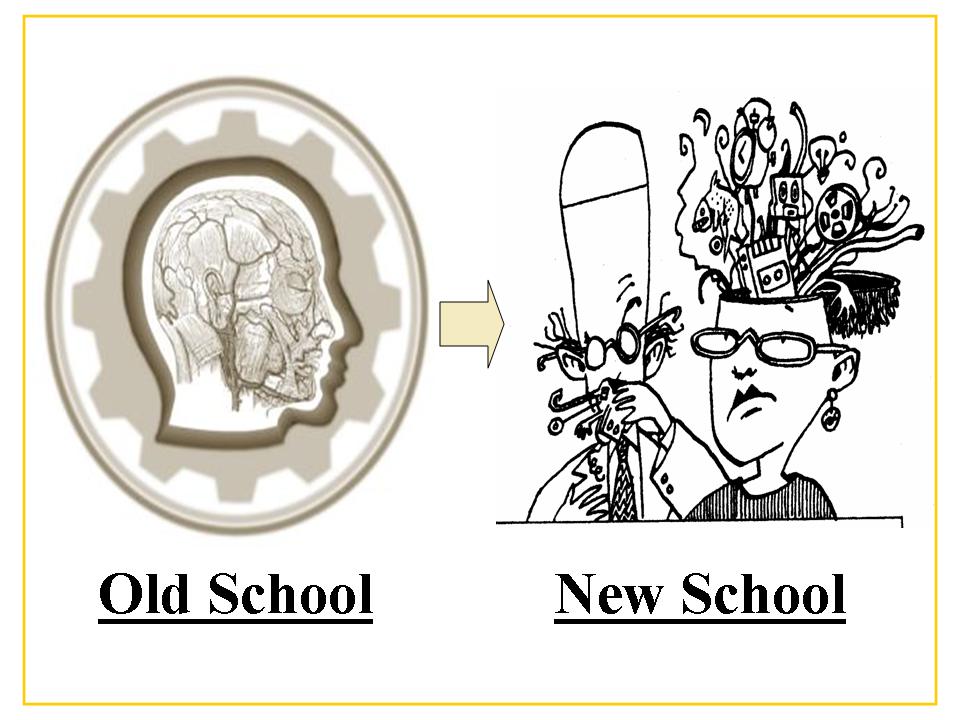The Mind: Old versus New School
Results from cognitive science over the last 30 years have completely flipped our understanding of how minds work in everyday situations. The old view casts us as conscious thinkers. Rationally attending to facts to learn and logically weighing alternatives to make decisions. This view of how minds work infiltrated social policy, economics, education, organizational design, product engineering and service design. The results were the prosperity and problems of the industrial era.
The new view of mind casts us mostly as unconscious emoters. It turns out that when you look at how we really learn, make decisions, solve problems and do other cognitive chores the processes we use are mostly unconscious and driven by metaphors, patterns, biases, mental short-cuts, emotions and other visceral states. This does not make use irrational just a different type of thinker than was previously assumed. We still reason but more with passion than facts. The calculus of how we think is messier and more of an evolutionary kludge than it is the smooth wheels of a rational computing machine.
Not embracing this new view of mind as designers has really created some problems. For example, this is why kids hate math, insurance is still sold rather than bought and we fail to take care of ourselves and save for retirement despite so many educational messages and products to help us. They assume we think and learn based on the old view of mind and talk right past us.
On the other hand, embracing the new view of mind as designers creates some real opportunity for innovation and even competitive advantage.
This is the central point in George Lakoff’s new book, The Political Mind: Why you can’t understand 21st-century American Politics with an 18th Century Brain.
Professor Lakoff’ argues that one political party tends to operate on the new view of mind whereas the other uses the old view. One is therefore effective at communicating and influencing voters and the other talks right past them.
So one party is savvy at using metaphors to frame complex issues, hits us with visceral slogans and mottos that activate deep mental models or archetypes and tells stories that run along emotionally rich neural pathways. They make repetitive and comforting arguments using everyday logic and naturalistic reasoning not simulation models, the results from think tanks and legalese. They appeal to the new school not the old school mind.
While I don’t track on many of the specific claims he makes, I do agree with the basic idea – design your communications for how minds actually work and you will be far more effective than those that don’t. This is an essential lesson and supercharges the folk wisdom of “talk to your audience” with the latest from cognitive science – know the dominate metaphors, cognitive biases, operating archetypes and core beliefs of your audience. This is great advice not only for politicians but business leaders and parents as well.
By the way, as readers of this blog certainly know, we are starting to rethink many aspects of social and organizational life based on the new view of mind. This is unleashing a wave of change that will take us out of the industrial era and fully into the knowledge era. The key is to operate from a more scientifically robust understanding of how minds actually work. That is what cognitive design is all about.


January 4th, 2015 at 5:55 pm
Bolsos Louis vuitton…
The ultimate way to send documents from desktop to help ipad/iphone as well as recíprocamente is usually iFunbox a new terme conseillé user friendly system that one could quickly find in the internet….